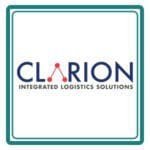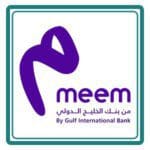ISO 14001:2015 Explained: A Beginner’s Guide to Environmental Management Systems

Introduction to Environmental Management System:
Sustainable development is a goal achieved by balancing the three pillars of sustainability: the environment, the society and the economy.
Organizations, whether public or private, large or small, in developed or in emerging economies, have an impact on the environment and can be affected by the environment in return. There is a growing understanding that human development and well-being are contingent on preserving and conserving our natural resources, upon which all human activity and productivity depend. Achieving sound environmental performance requires organizational commitment to a systematic approach and to continual improvement of an environmental management system.
Societal expectations are driving the need for improved management of the resources necessary to support human development, through greater efficiency, transparency and accountability for all organizations. There are growing pressures on the environment, from climate change, over-consumption of resources and the challenges created by degradation of ecosystems and the loss of biodiversity.
The main aim of ISO 14001 is to provide organizations with guidance for a common framework, in order to establish, implement, maintain and continually improve a system to support better environmental management. The environmental management framework should contribute to the long-term success of the organization and to the overall goal of sustainability. The framework of a robust, credible and reliable environmental management system should include:
- Understanding the context in which the organization operates.
- Determining and understanding the relevant needs and expectations of interested parties, as they relate to the environmental management system of the organization.
- Establishing and implementing an environmental policy and environmental objectives.
- Top management is taking a leading role in improving environmental performance.
- Identifying aspects of the organization’s activities, products and services that can result in significant environmental impacts.
- Identifying the environmental conditions, including events, that can affect the organization.
- Considering the organization’s risks and opportunities that need to be addressed in relation to its Environmental aspects and Compliance obligations
- Increasing awareness of the organization’s interaction with the environment.
- Establishing operational controls, as appropriate, to manage the organization’s significant environmental aspects and compliance obligations, and risks and opportunities that need to be addressed.
- Evaluating environmental performance and taking actions, as necessary, for its improvement.
The outcomes of a systematic approach to environmental management can provide top management with quantitative and qualitative data that enables informed business decisions that build long-term success and create options for contributing to sustainable development. The success of the environmental management system depends on commitment from all levels and functions of the organization, led by top management.
In addition to enhanced environmental performance, the potential benefits associated with an effective environmental management system include:
- Assuring customers of the organization's commitment to demonstrable environmental management.
- Maintaining good public and community relations.
- Satisfying investor criteria and improving access to capital.
- Enhancing image and market share.
- Improving cost control.
- Reducing incidents that result in liability.
- Conserving input materials and energy.
- Designing more environment-friendly products.
- Facilitating the attainment of permits and authorizations and meeting their requirements.
- Promoting environmental awareness among external providers and all persons doing work under the organization's control.
- Improving relations between industry and government.
Scope of Environmental Management System:
ISO 14001:2015 Environmental Management Systems – Requirements
Clause 01: Scope
This International Standard specifies the requirements for an environmental management system that an organization can use to enhance its environmental performance. This international standard is intended for use by an organization seeking to manage its environmental responsibilities in a systematic manner that contributes to the environmental pillar of sustainability.
This International Standard helps an organization achieve the intended outcomes of its environmental management system, which provide value for the environment, the organization itself and interested parties. Consistent with the organization’s environmental policy, the intended outcome of an environmental management system include:
- Enhancement of environmental performance
- Fulfilment of compliance obligations
- Achievement of environmental objectives.
This International Standard is applicable to any organization, regardless of size, type and nature, and applies to the environmental aspects of its activities, products and services that the organization determines it can either control or influence considering a life cycle perspective.
This International Standard can be used in whole or in part to systematically improve environmental management. Claims of conformity to this International Standard, however, are not acceptable unless all its requirements are incorporated into an organization’s environmental management system and fulfilled without exclusion.
Clause 02: Normative References
There are no normative references in this standard.
Clause 03: Terms and Definitions with clarification of terms
Clause 3.1: Terms and Definitions
For the purpose of ISO 14001:2015, the terms and definitions mentioned below apply:
- Terms related to organization and leadership:
- Management System: Set of interrelated or interacting elements of an organization to establish policies and objectives and processes to achieve those objectives.
- Environmental Management System: Part of the management system used to manage environmental aspects, fulfil compliance obligations and address risks and opportunities.
- Environmental Policy: Intentions and direction of an organization related to environmental performance, as formally expressed by its top management.
- Organization: Person or group of people that has its own functions with responsibilities, authorities and relationships to achieve its objectives.
- Top Management: Person or group of people who directs and controls an organization at the highest level. Top management has the power to delegate authority and provide resources within the organization.
- Interested Party: Person or organization that can affect, be affected by, or perceive itself to be affected by a decision or activity.
Call to Action
Boost your organization’s credibility with ISO 14001 certification. PopularCert provides expert guidance to help you achieve environmental compliance and business success. Contact us today to get started.
Types Of Certification
- ISO Certification
- ISO 9001 Certification
- ISO 14001 Certification
- ISO 45001 Certification
- ISO 22000 Certification
- ISO 27001 Certification
- ISO 17025 Certification
- ISO 13485 Certification
- ISO 20000-1 Certification
- ISO 22301 Certification
- ISO 50001 Certification
- ISO 37001 Certification
- IATF 16949 Certification
- ISO 29001 Certification
- ISO 31000 Certification
- ISO 20121 Certification
- ISO 10002 Certification
- ISO 41001 Certification
Get Free Consultation
Our Clients


















GET A FREE CONSULTATION NOW
FAQ
What is ISO 14001:2015?
Why is ISO 14001 important for organizations?
Who can implement ISO 14001?
ISO 14001 is applicable to any organization, regardless of size, industry, or location, that wants to manage its environmental impact effectively.
What are the key benefits of ISO 14001 certification?
Benefits include better cost control, improved compliance, enhanced public image, increased market share, and a stronger commitment to sustainability.
How does ISO 14001 support sustainability?
By helping organizations identify and manage their environmental impacts, reduce resource consumption, and contribute to the broader goal of sustainable development.
